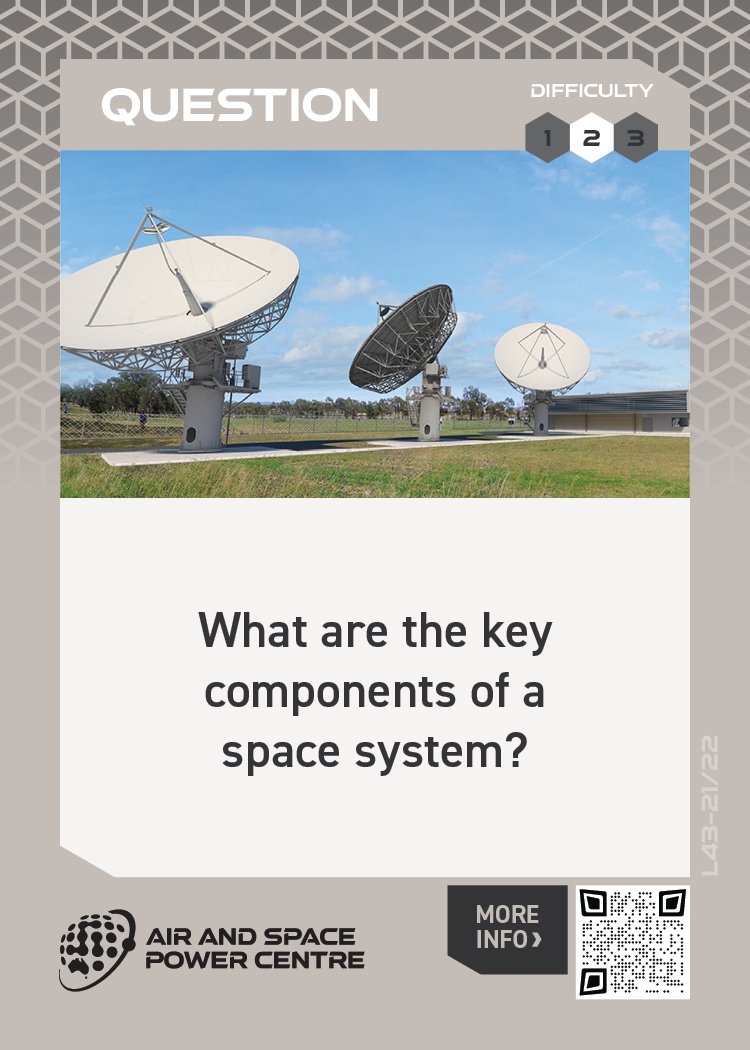
Overview
What are the key components of a space system?
Space system architecture refers to how the people who undertake employed during the terrestrial, launch, space, and user segments use the equipment to coordinate tasks that achieve the space mission objective.
Space system segments/components
Space systems are comprised of four segments:
- Space segment. The space segment consists of the spacecraft in the system (either an individual or a constellation). Spacecraft consist of a bus, which provides the structure and supporting subsystems (power, communications, thermal control, and attitude and orbit control) to support the payload, which is the equipment that actually performs the spacecraft's mission. A single satellite may carry multiple payloads, and payloads may serve many customers.
- Link segment. The link segment consists of the communications networks that connect the other segments, and includes both physical and non-physical elements.
- Ground segment. The ground segment consists of the ground-based infrastructure and associated services or support mechanisms critical to the functioning of the space system, such as satellite monitoring and control ground stations and mission operations centres.
-
User segment. The user segment consists of users and equipment that receive signals either directly from assets in the space segment (eg Global Positioning System signal receiver equipment) or via a mission operations centre (eg receivers of ISR products and missile warning reports).
Key Terms
TT&CS
Telemetry, tracking & control subsystem